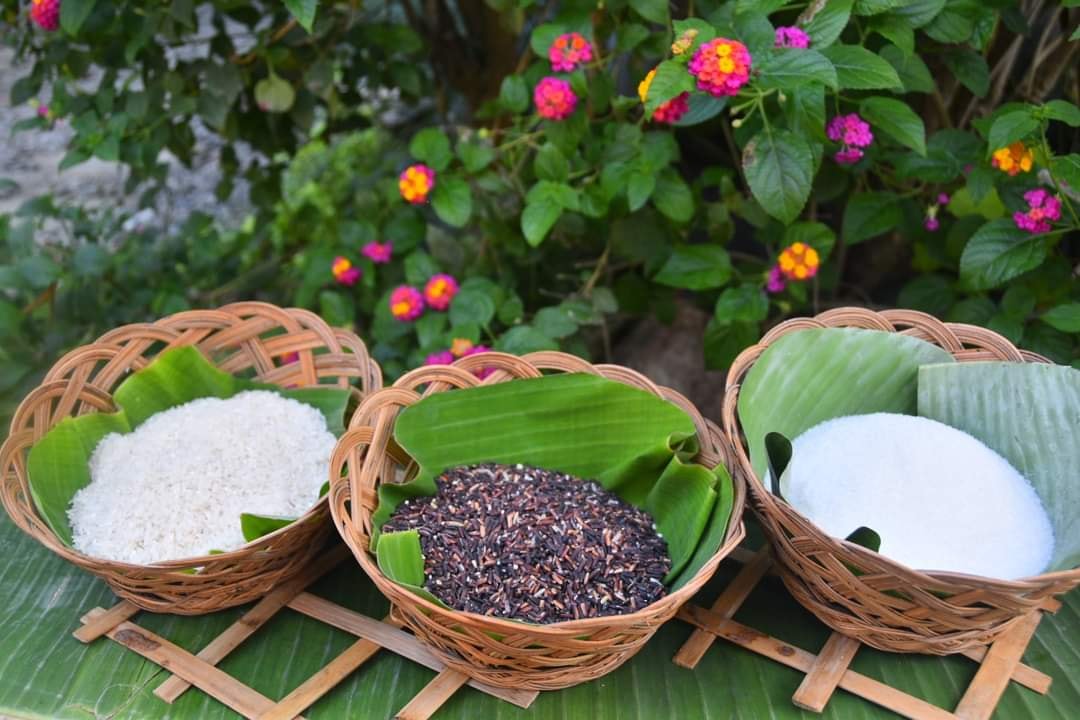PUTO TAPUL: A Taste of History
Food serves as an incredible gateway to discovering a new culture, offering insights into its geography, history and the people behind it. Being drawn to the people of a place, and the skill and craft used to survive their given landscape in long-established, natural ways. The craft behind the things that are grown, caught, made and preserved, and then the freedom of the makers to share the fruits of their skills, resourcefulness and deep knowledge.
Antique as a place of rich culinary heritage, with 18 municipalities and one which is the home to Gen. Leandro Fullons’ Shrine and the original Puto Ati or Puto Tapul is made, the town of Hamtic.
In Hamtic, a few things are inescapable: its peace-loving people, its quiet environment coupled with a light meal taken in the middle of the morning and in the afternoon, “merienda” – the meal testament to the Filipinos’ love for food and for company at any time of the day. It can be as simple as a kakanin like “sinakol” or a” suman” both wrapped in banana leaves, or pan de sal, often accompanied with coffee. A lot of local favorites have grown out of favor because of the overrated growing popularity of desserts blowing out in social media. Gone are the days of kakanin. But the town of Hamtic, preserved its original delicacy, “Puto Ati or Puto Tapul”
Puto [poo-toh] is a default term for native Philippine rice-based sweets, and its slightly sweet flavor and soft texture makes Antiqueños crave for it. And if you’re a Filipino, you may not consider a feast as a feast without puto. Unsurprisingly, we share this unique side dish with Malay countries around Southeast Asia. Similar to its predecessor, the Filipino adaptation is made with ground rice, steamed to cook, and can be served alongside rich stews or on its own. There are so many variations of puto in the islands in the Philippines. One of the more popular kinds is putong puti made from galapong, or rice flour. But one of the people of Hamtic, named as Mrs. Ninfa Singabol, reimagined the plain puto white by using “tapul rice” to add a more original and a sweet aroma of the rice-based delicacy, now known as “Puto Ati”. Mrs. Singabol is a local in Barangay 4, Hamtic, Antique and she started her puto making career since her mother started making puto. She proudly said that, “Atun gid tana dya nga mga taga Hamtic ang Puto nga Tapul” which means that, “this delicacy originated in Hamtic”. She only accepts orders 24/7 and wasn’t able to put up her own restaurant because of her age. She said that, making puto is not as easy as we all know since the process to make a perfect one requires patience while putting it on an extremely hot “kalan”. Each puto costs 9.00 but preferably, she accepts in bulk orders. As I know, It is a family-run business, whereas, Mrs. Singabol works with her husband together with children in making “Puto Ati”. And probably one of the reasons why lots of people love its delicacy, since it is made with love by the members of its family. It shows family, and how a family should work together to keep its ties intact. It shows family and how one thing will always bind them together. It’s like the puto your grandmother bakes, that makes you and your cousins jump to the table and enjoy, that makes you and your cousin be “one” even in many differences. This rice-based delicacy in Hamtic shows not only of its fascinating black color but as well as how a family heritage should be kept alive and uplifted.
 |
| L-R (grated coconut, tapul rice, sugar) |
 |
| Rice batter ready to cook |
As time goes by, people will be able to look back to local delicacies compared to those desserts found on their social media account and I do bet that a lot of people still choose the latter part of todays’ very famous delicacies. Time will come that people would rather buy a sticky sweet rice for an hour until it gets chewy. For this, Puto Ati, is one of the delicacies that makes a family gather in a table for siesta and never fails to provide that much needed dose of inspiration in the middle of an otherwise uninspiring day. It can be a lifesaver, for its sweet rice is made of tapul that gives color for the delicacy, cooked in banana leaf that adds aroma to it, chewy, soft texture and takes hours to make – a real labor of love of a family. And definitely made by the locals that make each and every Hamtikanons proud of!
 |
| Lifting of a batch of cooked Puto Tapul. Photo by MRG Rodriguez |
My utmost respect goes out to those who run the gauntlet of producing food traditionally today, that facilitates the natural practices of established food preservation, seeing the blossoming of a truly bio-culturally diverse landscape.
I would welcome a future in which everyone has the opportunity to experience joy through producing some of their own food. Through this, we can develop truly valuable skills and find ways to exist in harmony, becoming the landscape through its eating and connecting with the processes that nourish our very existence, while allowing us to truly belong.
https://aithor.com/essay-examples/preserving-and-promoting-traditional-cuisine
https://sustainablefoodtrust.org/news-views/preserving-the-practices-of-traditional-foods/
https://www.nourishandtempt.com/flavours-of-the-philippines/
https://doi.org/10.3390/soc13040095
https://theunknownartblog.wordpress.com/2016/12/08/puto-ati/
______________________________________________________________________________








